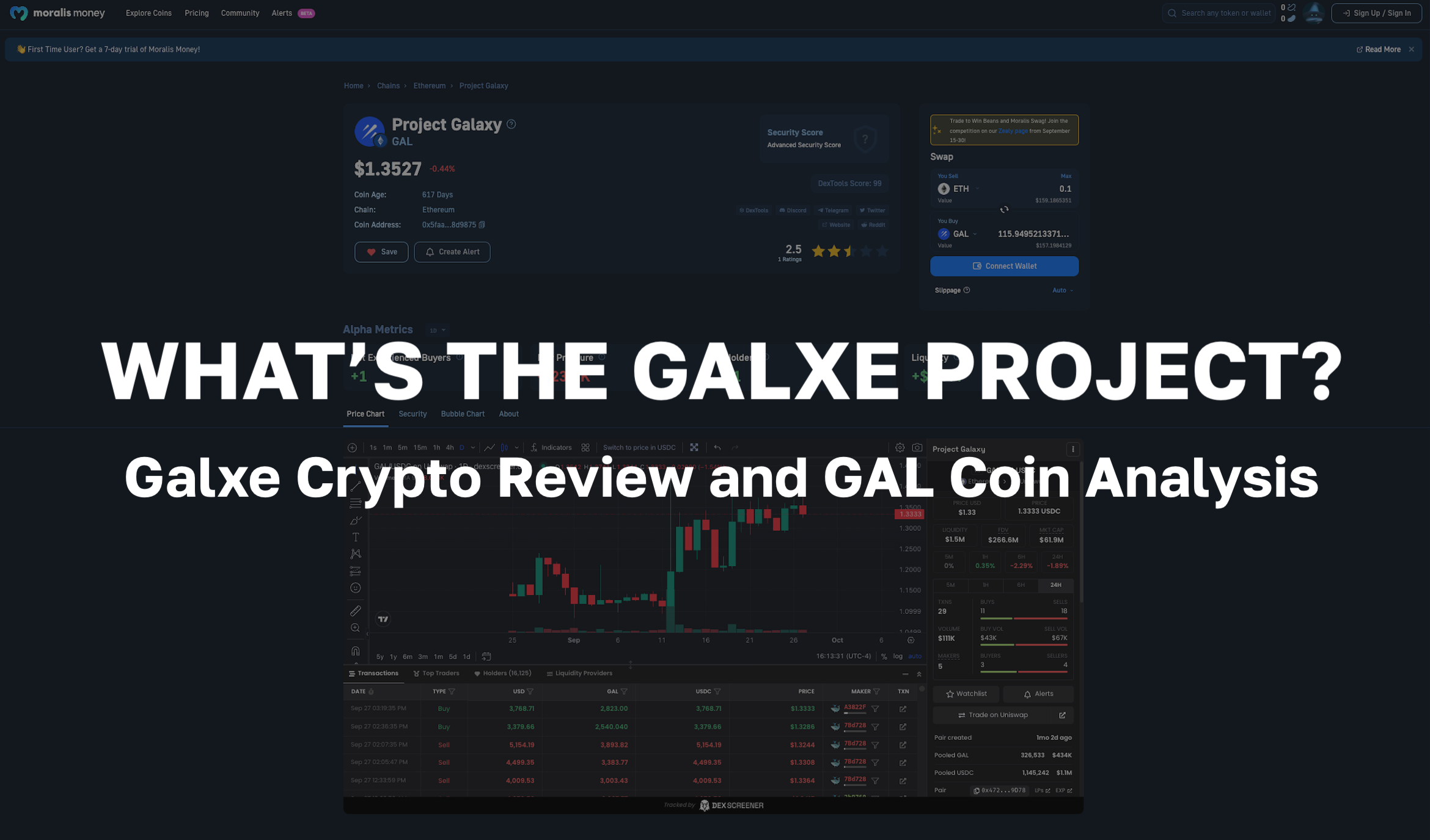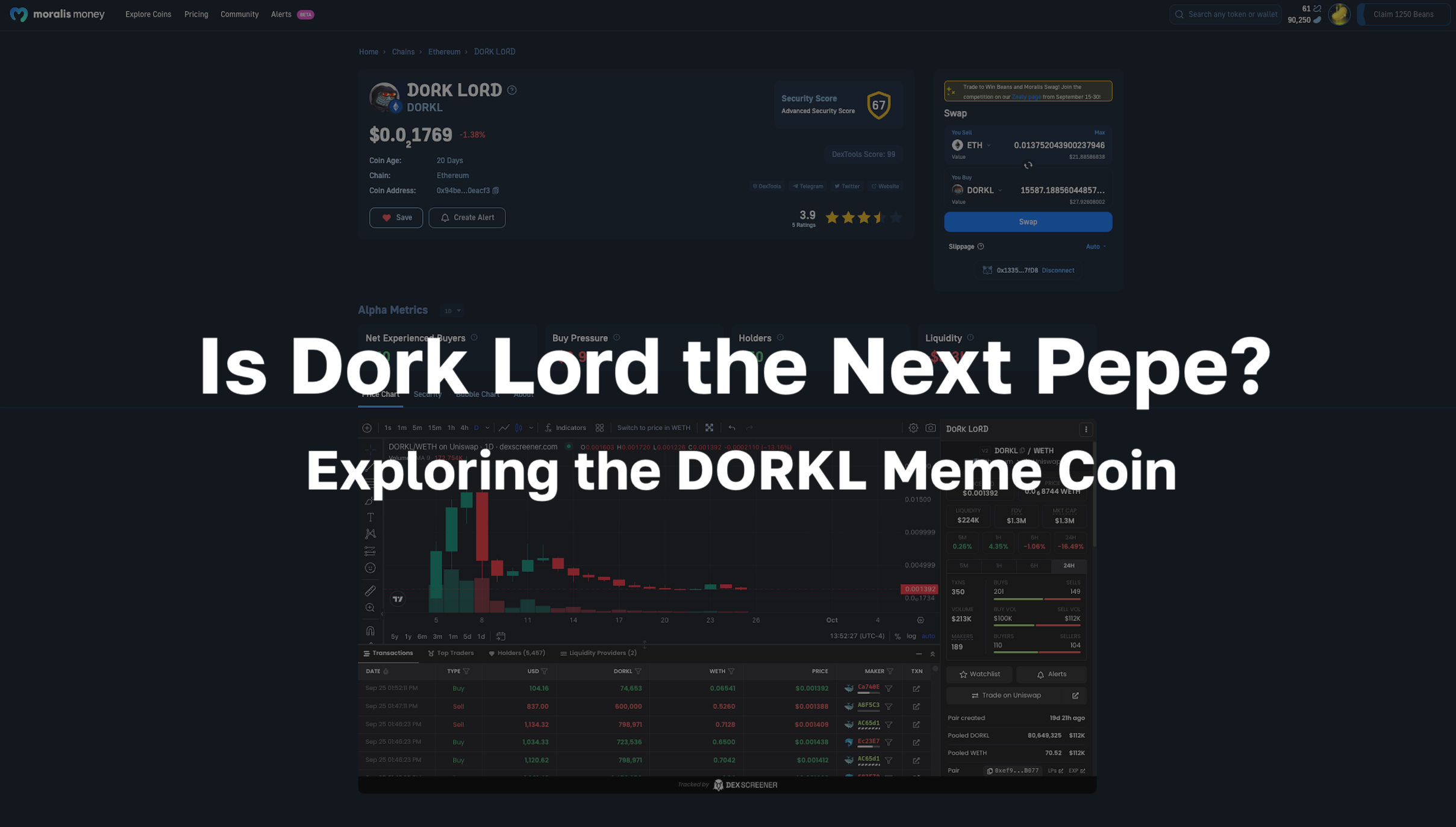In this article, we are going to dive deep into the world of crypto and inflation. We’ll look at the various definitions of the term (relative to finance) and how this varies between traditional financial and cryptocurrency assets. Plus, we’ll look at how inflation affects the cryptocurrency industry as a whole. Also, for those wondering, “do cryptocurrencies protect against inflation?” we’ll explore how investors can hedge against inflation with crypto.
Would you like a more comprehensive understanding of the crypto industry and how the underlying technology works? If so, check out the Blockchain & Bitcoin Fundamentals course at Moralis Academy! Perfect for beginners, this course offers expert video-led tuition suitable for anyone, even for those with no technical experience! Lose yourself in the world of blockchain and Web3 development today at Moralis Academy!
Understanding Crypto and Inflation
As the term “inflation” can often cause confusion, we’ll begin this article by explaining the different definitions of the word “inflation”. Plus, we’ll highlight how this differs between the traditional financial and cryptocurrency industries. Overall, in all its definitions, the word “inflation” is synonymous with the expansion of a concept. With regards to finance, this refers to the money supply.
Moralis Academy educates students around the history of money and how the current financial sector operates. Offering cryptographic immutability, security, and decentralization, blockchain radically improves the transparency of financial operations. Below, we'll briefly discuss how inflation works within the legacy industry. However, to truly understand the intricacies of inflation operations, see our Bitcoin Monetary Revolution course. Accordingly, students will begin to understand the urgent need for blockchain technology development within the finance industry.
What is Inflation in Traditional Finance?
Economists use the word “inflation” in traditional finance to describe the rising cost of living. Most economists will argue that a small amount of annual inflation is healthy. However, if we consider what inflation is and how it arises, too much can be disastrous. Let’s briefly break down how inflation happens and why it has kept going up recently.
There are two key things to remember when calculating the value of something: supply and demand. With fiat currency, the amount of trust in a country’s government is also vitally crucial to its value. The pieces of paper themselves don’t hold any value. Rather, the trust between parties that the paper(s) are of equal value for a product or service in return maintains consumer spending. Before 1971, the USD had a price-peg to one troy ounce of gold. Moreover, other global currencies were then backed by the USD. However, President Nixon infamously cut the price-peg of the dollar, with most fiat currencies, in turn, having no backing of any tangible asset.
Therefore, it is often best to view inflation not as the value of goods increasing; rather, the value of a currency and its purchasing power are decreasing. While the supply of a currency increases through “quantitative easing” (QE), lending six or seven-figure loans to "zombie" businesses, and attempting to stabilize economies through a global pandemic, the demand (population) has barely changed. Neither have the core ingredients in Coca-Cola. However, fifty years ago, $0.50 could buy you five cans. Now, it takes more than five times this ($2.50) on average to purchase one can. The core ingredients of the product are no different. Instead, the value of the currency buying the product is worth less, so you need more of it to buy the same amount of product.
How to Understand Crypto and Inflation
So, now that we understand how inflation works in the traditional finance industry, let’s explore the relationship between crypto and inflation. First, there are two ways to evaluate inflation in the cryptocurrency industry.
One could consider the inflationary aspects of a distribution model of a cryptocurrency coin or token. Alternatively, one could potentially look to invest in crypto to hedge against inflation. Now, for readers that are wondering, “do cryptocurrencies protect against inflation?”, we'll explore deflationary assets further in the article. Furtermore, both viewpoints are ideally to be of consideration when doing research before investing in crypto. Moreover, the form of the token distribution model is fundamental to the deflationary aspects of a project.
The western capitalist economic model suggests a free market, with the value of assets priced on its availability (supply) and drive of consumer spending (demand). However, in the traditional markets, governments often intervene to offer loans (print more money/expand currency supply) to businesses living in debt but are “too big to fail”. Accordingly, the dissolution of unprofitable business models and redistribution of assets for up-and-coming innovative business is not happening. However, in the crypto industry, investors are free to trade, buy, and sell assets as they please with no centralized price manipulation. This is why a calculated distribution model is vital to the value and longevity of a crypto asset.
Distribution Method
A project’s token distribution model can speak volumes about the legitimacy and longevity of a project. The speed at which new coins or tokens are introduced into the free market circulation is known as the “inflation rate”. Plus, there are several things to consider. First, projects could offer a private sale or seed round, selling native tokens to fund the project. In addition, project tokens could be released immediately to the team's founders, advisors, developers, etc. Moreover, tokens could be allocated as rewards for community incentives.
Second, the speed of the number of new tokens entering into circulation can affect a token’s price. Crypto marketing campaigns including airdrops and giveaways mean that certain community members will receive free project tokens prior to or during launch. Projects must be careful not to distribute too many so that holders would potentially sell their assets upon launch, decreasing the value. Moreover, the allocation percentage of project tokens available to developers is another feature to bear in mind. Historically, there have been “pump and dump” schemes from projects. During such cases, after a successful launch, the developers have sold their majority token holdings. As such, a few individuals can walk away with millions while investors are left with worthless tokens.
The distribution models and inflation rates of tokens vary drastically between projects. Some projects will encode a long-term distribution over many years. Others will release all tokens within the first year, with no seed round or team holdings. This is often an attempt to show the community-centric focus and development of the project.
Asset storage and security are paramount to all crypto investors. For readers familiar with the Solana ecosystem who would like to discover how to keep your assets safe across multiple devices, save our “What is Phantom Wallet?” article for later.
Do Cryptocurrencies Protect Against Inflation?
So, one way of looking at crypto and inflation is a project’s token distribution model and inflation rate. The other way we can consider crypto and inflation is by exploring the question, “do cryptocurrencies protect against inflation?”. In short, some crypto assets do, and some don’t. It largely depends on the asset’s distribution model, the value and adoption of the project, and ultimately, the value of the USD.
This first cryptocurrency ever to launch, Bitcoin, was designed as a deflationary asset. Simply put, this means that as the value of traditional currencies decreases, the value of Bitcoin will increase. This is a process sometimes referred to as “hedging against inflation”. Many people living in countries with struggling economies suffering hyperinflation (when the price of goods goes up or currency is devalued exponentially) turn to Bitcoin as a safe haven. When it’s cheaper to buy two drinks instead of one, as the price will have risen when you’ve finished the first, the value of Bitcoin in said fiat currency would also be rising. As such, transferring wages immediately into Bitcoin provides a liquid (easily accessible) form of storing wealth.
Since Bitcoin’s launch, thousands of other cryptocurrencies have emerged, improving certain technicalities while embracing a deflationary token model. Nevertheless, Bitcoin remains the largest and, therefore, most reliable and secure blockchain in the industry. There are inflationary aspects of Bitcoin as rewards for miners in the network. However, the project encodes a “halving event”, reducing the inflation rate by 50% each year to ensure its deflationary safe haven virtue.
Deflationary Assets
Investors don’t need to comprehend the complete technicalities of inflation and deflation to save their wealth. They just need to understand the concept of supply and demand. With Bitcoin, there will only ever be 21 million BTCs mined, cryptographically immutable, and publicly transparent. A hard cap supply cannot be adjusted, manipulated, or inflated by centralized or governing bodies. Therefore, with the supply being constant and a continuation in demand, the value of Bitcoin (BTC) has witnessed more than a 13,000,000% increase.
Aside from Bitcoin, there are some other go-to deflationary assets for investors to save their wealth by hedging against inflation. This includes the likes of gold, other certain precious metals, and real estate. Also, vintage cars and artwork are more portable and accessible assets to invest in, holding deflationary properties. Plus, with the rise of digital and crypto art as non-fungible tokens (NFTs), these are becoming a new form of hedging against inflation as well. The value of NFTs isn't always guaranteed to go up. However, popular collectibles from reputable artists with high demand generally have a larger chance of price appreciation. Save our "Most Expensive NFTs Sold" article for later to check out some of the most popular NFTs in the industry!
How Does Inflation Affect Cryptocurrencies?
Hopefully, you now understand how cryptocurrencies can protect against inflation. In this section, we’ll look at how inflation in the traditional financial industry can affect the price of assets in the cryptocurrency industry. As we have just discussed, one effect could be price appreciation of a deflationary crypto asset, hedging against the inflation of a local, national currency. However, the percentage of which the price appreciation of deflationary assets counters the devaluation of the fiat currency varies depending on the value of the USD.
If, for example, investors transfer their fiat into cryptocurrency stablecoins (assets with a price-pegged fiat currency, usually the USD), they could still feel the adverse effects of traditional inflation. This is because the reserve value of stablecoins will be losing value over time. Therefore, stablecoins will have less purchasing power to pay for goods.
Another factor affecting crypto and inflation and the ability of cryptocurrencies to protect against inflation is market uncertainty. Uncertainty in the traditional markets, surrounding inflation rates, politics, or world events, is reflected in the stock market value. Moreover, the crypto markets still appear to correlate with the price action in the traditional market.
As such, bearish macro trends and black swan events within the traditional realm can often be seen in the cryptocurrency market. Plus, as the cryptocurrency industry is still relatively small, it is also incredibly volatile. This means, at times, that investors can be at a loss, and the value of a project can decrease to zero overnight if the community suddenly loses faith and sells all its assets. Using cryptocurrencies to protect against inflation can be incredibly fruitful and profitable, but it does come with risk. Make sure to do your own research before investing in any crypto platform or asset.
Do Cryptocurrencies Protect Against Inflation? - Summary
Discussing crypto and inflation can be confusing. However, we hope you understand more about the different definitions of the word within the industry. Also, when considering “do cryptocurrencies protect against inflation?” we encourage readers to carry out due diligence and consider the token distribution model of a project’s asset. In the traditional realm of finance, inflation refers to the increase in the price of goods or services. Alternatively, one could view traditional inflation as the percentage of annual debasement of a currency.
Conversely, inflation refers to the token emissions rate and distribution model in the cryptocurrency industry. Moreover, certain cryptocurrency projects, such as Bitcoin, operate tokenomics to act as deflationary assets for investors to hedge against inflation. However, not all cryptocurrencies employ deflationary token features.
To take your crypto knowledge to the next level, check out our Ethereum Fundamentals course at Moralis Academy! Students engage with an interactive community while discussing and learning the foundations and operations of the Ethereum blockchain. Alternatively, see our “Bitcoin Mining Companies” article or “Top Crypto YouTube Channels” article to expand your blockchain knowledge!




